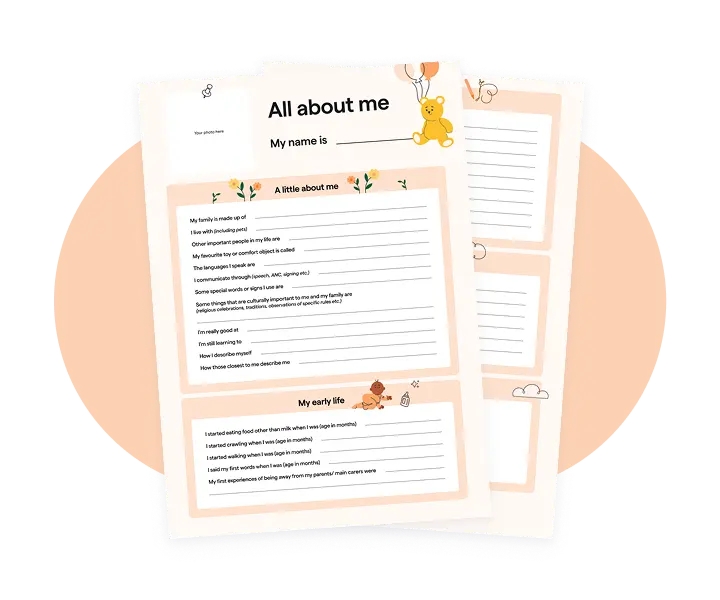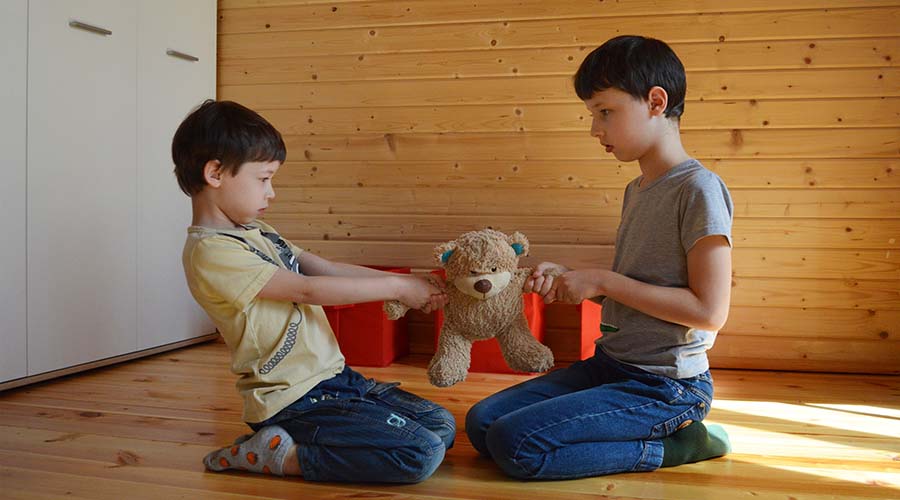settings
children
With Famly since
Over the past three years, there has been an increasing number of children registered to social care because they have experienced emotional abuse.
As someone who has spent many years working in social care, I know that my knowledge and understanding about child abuse is something that comes with time. I recall the many conversations and discussions with others, including practitioners, about why emotional abuse might not be all that we know it to be. We often think of it as a single category on its own, but there are many nuances within it that we need to know in order to best protect and nurture young children.
More so, I reflect upon discussions that have resulted in emotional abuse being normalised or excused as something that has little or insignificant impact upon a child’s wellbeing.
Because emotional abuse can be difficult to recognise or identify, and can often go hidden or unrecognised, I’ll use this article as an opportunity to explore the nuances and misunderstandings surrounding emotional abuse in the Early Years, and what you can (and should) do to prevent it.
Addressing myths and misconceptions surrounding emotional abuse
Before we dive into how to recognise and respond to emotional abuse, I’d like to address the two most common misconceptions I’ve encountered in my work.
- "Emotional abuse is the least damaging type of abuse — it isn’t as harmful as other categories of abuse."
Parents and sadly some professionals working with children will make judgements based upon misconceptions that emotional harm doesn’t really count as abuse if it doesn’t affect children’s physical wellbeing. But if we accept this, we marginalise our ability to see things from the child’s perspective.
We need to focus on the ‘child’s lived experience’. We should ask ourselves — what is it like for a child to live with fear or anxiety? How does it feel to be persistently humiliated or shamed? What is it like for the child who is endlessly verbally abused by a parent, or by someone who uses racist language and discriminatory actions against them? What about the child who is blamed or accused, ignored, and ostracised? It goes without saying that this treatment is just as abusive as physical harm, and must be taken seriously.
- "Young children won't remember incidents that are emotionally or psychologically abusive."
Given the extent of knowledge we now have about neuroscience and brain development, early trauma is deeper than the damaging memories of an incident, and how this made the child feel at the time. We know that emotionally abusive experiences significantly impairs healthy brain development for young children — so we should respond to it as the developmental threat it is.
The impact of toxic stress upon the developing brain
We all appreciate that the Early Years is when children’s brains are at their most developmentally active. This makes helping and protecting young children from unhealthy, harmful experiences even more pertinent.
My friend and colleague Mine Conkbayir has helped me to understand a great deal about the impact of toxic stress that occurs as a result of abuse upon young brains. In the second edition of her book Early Children and Neuroscience: Theory, Research and Implications for Practice, she explains that “at a neurobiological and physiological level, children under stress cannot learn”, they will “fail to thrive” and there will be wider implications for their “general mental wellbeing”. She goes on to explain a most concerning fact that things such as anxiety, low confidence, depression, and self-harm affect children as young as three years old.
From my perspective, understanding the impact of trauma on brain development not only raises our awareness of the damage caused by adverse childhood experiences. It also serves to drive our responses as early years practitioners to act quickly and appropriately for children who experience emotional abuse.
Defining emotional abuse in the early years
In 2018 the DfE defined emotional abuse as follows:
Emotional abuse is the persistent emotional maltreatment of a child. It is also sometimes called psychological abuse and it can have severe and persistent adverse effects on a child’s emotional development. Although the effects of emotional abuse might take a long time to be recognisable, practitioners will be in a position to observe it, for example, in the way that a parent interacts with their child.'
Emotional abuse may involve deliberately telling a child that they are worthless, or unloved and inadequate. It may include not giving a child opportunities to express their views, deliberately silencing them or ‘making fun’ of what they say or how they communicate.
The big ideas

Common signs of emotional abuse in young children
There are many forms of emotional abuse in young children. You might identify them by some of the following signs:
- Changes in a child’s behaviour or patterns of behaviour changes that indicate exposure to harmful adults or situations on certain days or times in the week. A child’s behaviour change may coincide with special occasions and / or family celebrations.
- A child’s behaviour regresses, and they revert to non or poor communication or begin to have toileting accidents.
- A child may become angry or aggressive. They may show hostility towards other children. They may be cruel to children and to animals.
- When parental conflict occurs within the family home children become overtired because their usual sleep patterns are interrupted. Children who experience domestic abuse find it hard to fall and stay asleep at night.
- Children may be fearful and anxious. They may become clingy or reluctant to go to nursery worrying about what will happen to a parent when they are not there.
- Children may have low self-esteem and believe that they have no value or that they are ugly and unattractive. They may self-harm.
- A child may tell an adult that something has happened to them that suggests that they are being emotionally abused.

Responding to emotional abuse in early years practice
Following the process of IDENTIFY, HELP, PROTECT and REPORT provides early years practitioners with an effective safeguarding strategy that supports children experiencing abuse. Already alluding to the difficulties in identifying emotional abuse in young children, there are some things that we can consider to help with this.
Effective use of the key person.
For the key person to be an effective safeguarding practitioner they need knowledge of two essential things:
- Knowledge of the child.
This includes gathering not only information about the child, their family and their ongoing circumstances but also building strong relationships with them to nurture them and best meet their unique and individual needs.
2. Knowledge of risks and harms and how they present in young children.
Understanding the impact of child abuse, how this is identified in young children alerts practitioners to respond appropriately depending on the needs of the child.
Nurturing environments and best practice.
Children who experience abuse especially emotional abuse will need a place where they will feel safe and protected. Your environment should provide a place of sanctuary where children can receive a number of things aided by skilled early years practitioners. For example:
- Spaces for quiet and rest where children can relax and nuzzle into comfy cushions either alone or with their key person.
- Large spaces to run and get physically active and busy.
- Opportunities to identify feelings and emotions along with their peers and supportive and trusted adults.
- If invited, opportunities of comfort through physical touch and hugs from adults with whom they have relationships who can offer reassurance and empathy.
- Storybooks that explore big emotions and adverse experiences, to help bring up these topics with young children. You might try Floss and the Boss, which specifically explores themes of household abuse.
Taking action
Children who experience emotional abuse need us to take action.
Once we identify their needs, action should always follow. For some their needs can be met through interventions that require ‘early help’ which will involve either single or multi-agency input. If the needs of the child are such that they are severe or demonstrate ‘significant harm’ they will require protection.
When a child is in need of protection, statutory services such as social care must be told. Reporting concerns about a child should always take place, and the designated safeguarding lead is obliged to act upon reports of concerns from those they work with and to pass these on to statutory services without delay.
Try learning journals for free
Add observations, and build digital learning journals to share with families instantly. All with your completely free 14-day trial.
Get started









